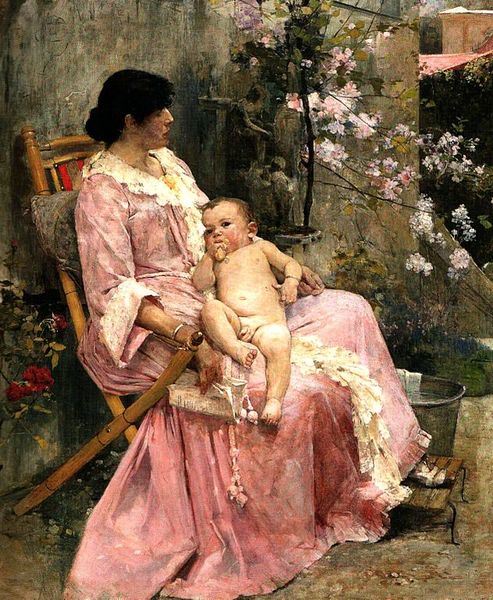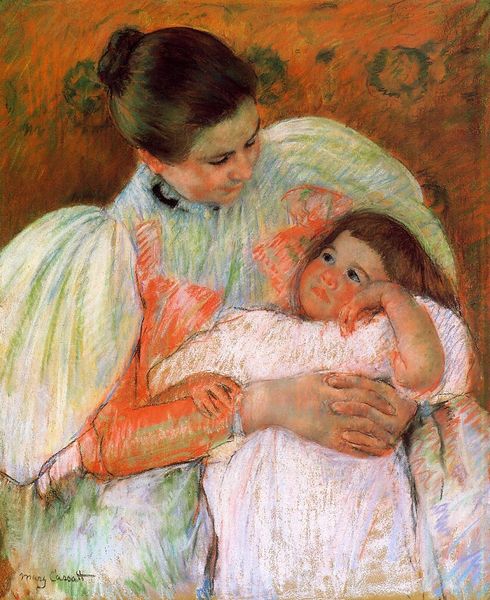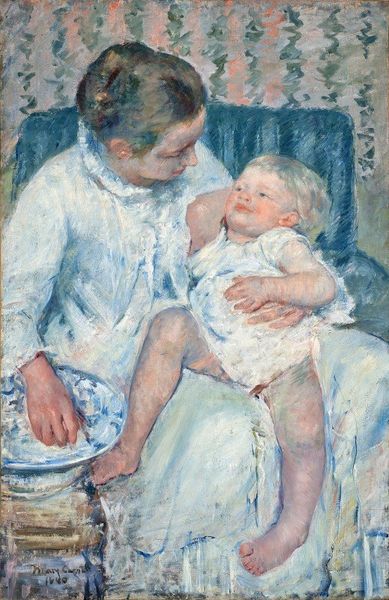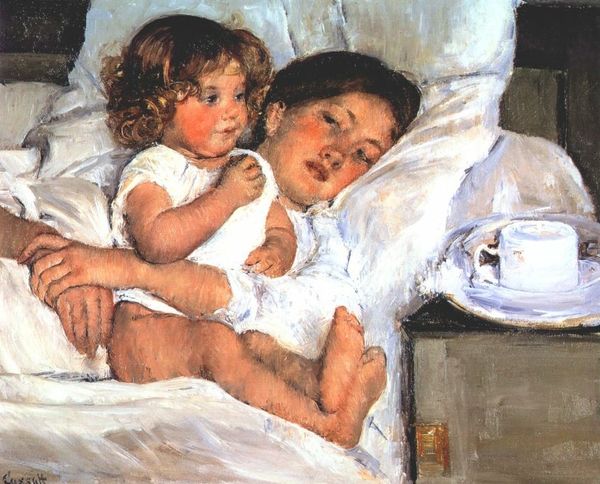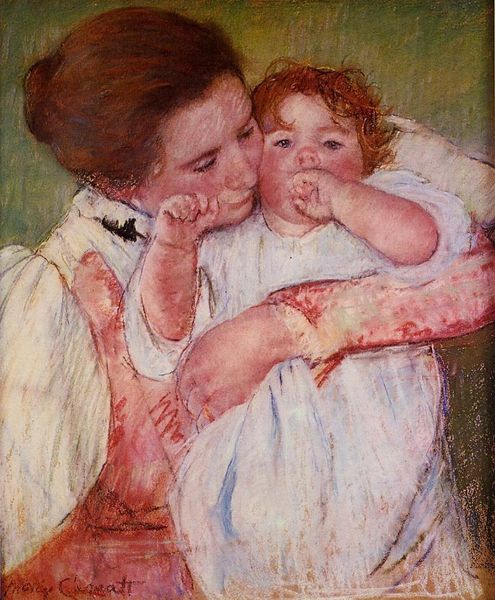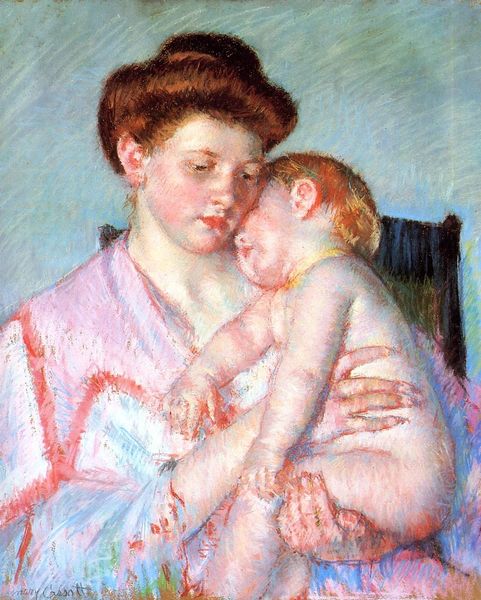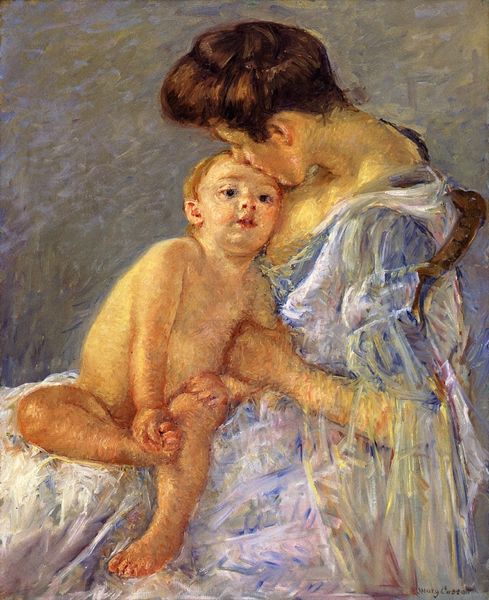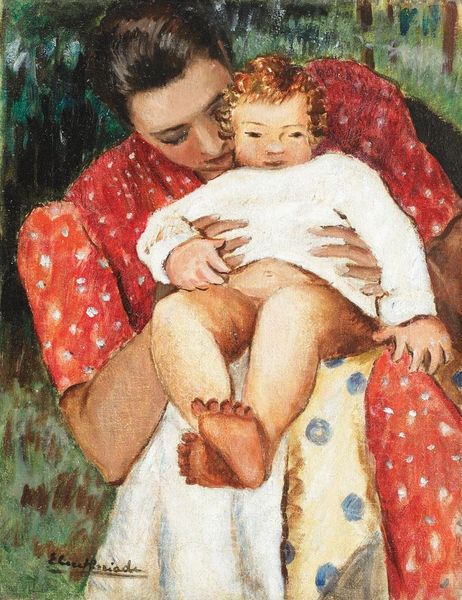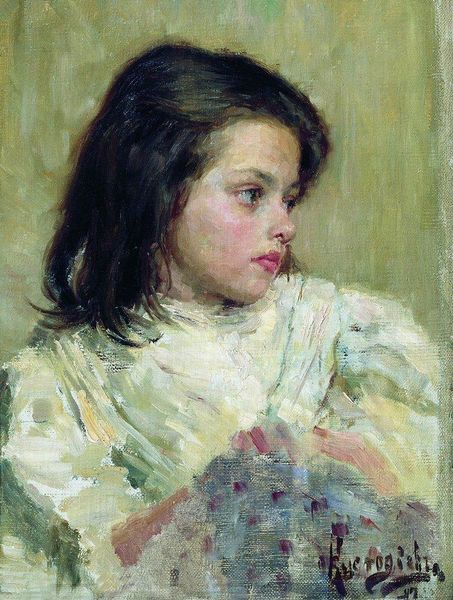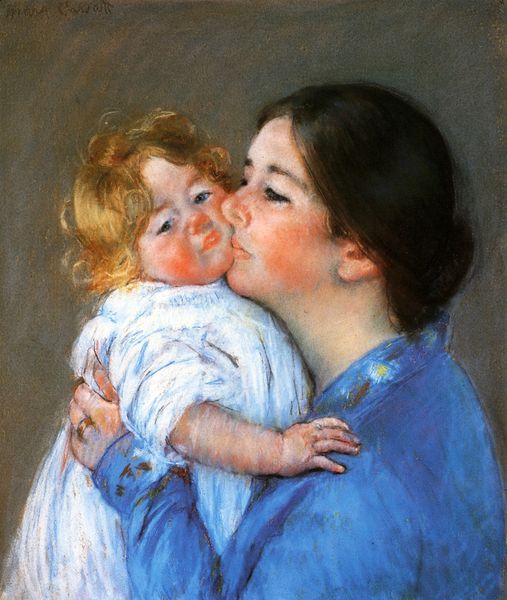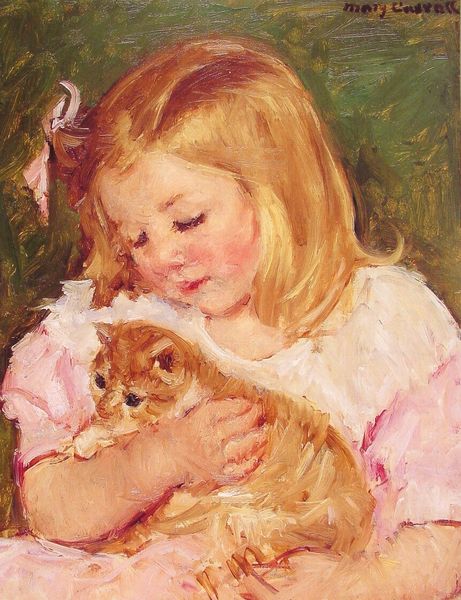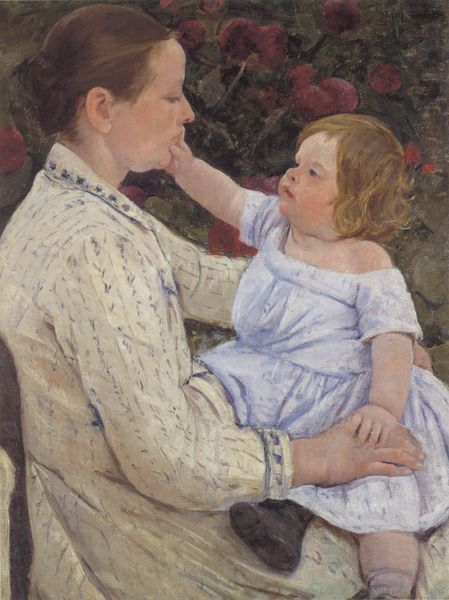
painting, oil-paint
#
portrait
#
mother
#
painting
#
impressionism
#
oil-paint
#
figuration
#
oil painting
#
child
#
genre-painting
#
fine art portrait
Copyright: Public domain
Editor: This is "Emmie and Her Child" by Mary Cassatt, an oil painting from 1889. I’m immediately struck by how intimate and tender the portrayal is. What layers do you see beyond the surface depiction of motherhood? Curator: Intimacy is a powerful element, wouldn't you agree? Cassatt seems particularly adept at capturing a raw, unguarded moment. Consider the repeated motifs: the floral pattern of the dress mirroring nature's bloom and echoing the budding life of the child. Does this not bring forth themes of growth, nurture, and the cyclical nature of existence? Editor: I see what you mean. The dress kind of cocoons them. But is there any symbolism behind Emmie’s slightly melancholic gaze or the child's somewhat listless posture? Curator: Those postures speak volumes. The mother’s gaze, averted yet protective, embodies a kind of quiet strength—perhaps also a hint of the sacrifices inherent in motherhood. The child’s posture speaks of dependence, trust, but also a hint of the challenges and anxieties passed on across generations, what some might even see as the inevitable inheritance of sorrow. It is important to remember how radical a symbol this vulnerable depiction of private, domestic life was at this time. How does the seeming randomness of brush strokes help with your appreciation? Editor: I agree. The softness underscores the emotionality of the moment. Considering that Cassatt was a woman artist in a male-dominated art world, do you see a commentary on the traditional Madonna and Child theme here? Curator: Absolutely. She's appropriating a deeply rooted archetype, yet recasting it with an honest, feminine lens. Not the idealized Madonna, but a real woman experiencing the complexities of motherhood. This challenges not only artistic conventions but also social expectations placed on women. Don't you find this an exciting and relevant approach? Editor: Definitely. Seeing how Cassatt subverts traditional symbols to represent lived experience makes the work incredibly powerful. Curator: Indeed. She uses the language of familiar iconography to tell a profoundly personal and female-centric story, creating a resonant and timeless image of the maternal bond. There is beauty in a break with expectation.
Comments
No comments
Be the first to comment and join the conversation on the ultimate creative platform.
